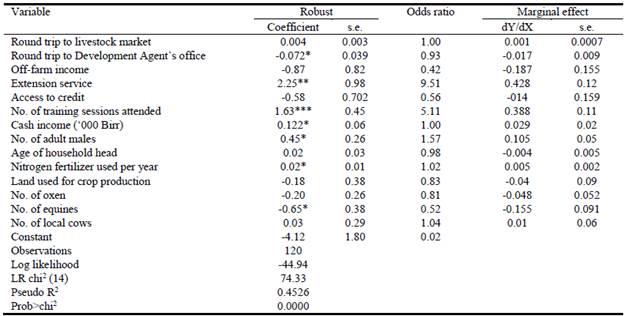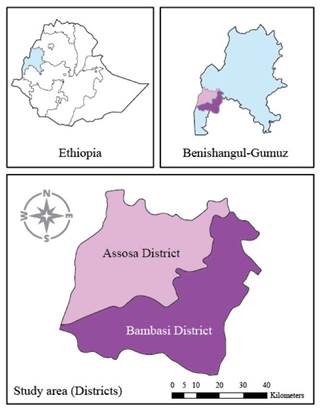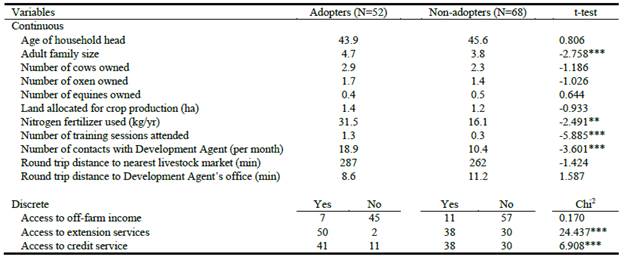Introduction
Feed availability and quality are two of the major factors limiting livestock productivity in Ethiopia. Some feed-related constraints include: reduced grazing and pasture-lands, overstocking, seasonal variation in availability of roughage feeds, poor nutritional quality of forage, use of crop residues for other purposes, limited availability and unaffordability of concentrate feeds, low adoption of improved forages, low adoption of silage and hay making, and low adoption of urea treatment of crop residues at smallholder farmer level (Alemayehu 2012).
Increasing human population and declining productivity of cultivated areas result in increasing demand for arable land to produce food for humans in Ethiopia. This leads to reduction in area of land available for natural grazing and fodder production. At the same time, livestock numbers are being increased to meet the increased demand for draft power for crop production. These conflicting developments have placed an unsustainable demand on land resources, by transport of nutrients away from fields in the form of grain, crop residues and dung used for fuel. On the other hand, increased crop production results in increased crop by-products, providing a valuable source of animal fodder, if it is supplemented with protein from improved forages or nitrogen supplements (Alemayehu 2002).
To sustain livestock and crop production in Ethiopia, both livestock raising and crop production should be intensified. Feeding systems should be intensive with emphasis on cut-and-carry systems and reduced numbers of more productive livestock. For this strategy to be successful, improved forages, which have comparative advantages over indigenous forage species in terms of dry matter yields and quality, need to be widely adopted. In addition, improved forages, e.g. tree legumes, provide benefits like improving soil fertility, serving as fence material and providing shade for crop farming.
Improved forage species have been progressively introduced to local farmers of Ethiopia since 1970 to supplement the natural feed resources (EARO 2002). However, few studies, e.g. Gebremedhin et al. (2003) and Beshir (2014), have been conducted to identify factors that affect the adoption of these technologies.
In Benishangul-Gumuz, where this study was conducted, crop production integrated with livestock farming is the main-stay of the population. Two farming systems are practiced, namely: shifting cultivation; and permanent farming systems. The former is an agricultural system where plots are cultivated temporarily and then abandoned. Improved forage species, including elephant grass (Pennisetum purpureum), oats (Avena sativa), rhodes grass (Chloris gayana), pigeon pea (Cajanus cajan) and Sesbania species, have been introduced in an endeavor to increase the amount and quality of available forage and have been promoted in the region by Assosa Agricultural Research Center for the last decade. However, adoption of these technologies by smallholder farmers has failed to reach expectations. Moreover, research has not been conducted to determine the factors that influenced the adoption or lack of adoption by farmers in the area. This paper examines factors that influenced why farmers either adopted or failed to adopt the new forage technologies. Major household characteristics plus socio-economic and policy factors affecting the adoption of improved forage crops are identified, and suggestions are made for strategies to increase rates of adoption.
Materials and Methods
Study area
The study was conducted in 2 districts of Assosa zone, namely: Assosa and Bambasi (Figure 1). The zone is located in Benishangul-Gumuz region, Ethiopia, which is approximately 680 km west of Addis Ababa.
Average annual rainfall is 1,316 mm (mainly from April to October), mean annual temperature ranges from 16.8 to 27.9 °C and elevation from 580 to 2,731 masl (AMS 2013). Two farming systems are used in the study zone, namely: shifting cultivation; and permanent farming. Shifting cultivation is practiced mainly by Berta ethnic group, whereas permanent farming is practiced by settlers, an Amhara ethnic group who were relocated from the northern part of Ethiopia to Benishangul-Gumuz. Major crops grown are sorghum (Sorghum bicolor), maize (Zea mays), finger millet (Eleusine coracana), soya bean (Glycine max) and ground nut (Arachis hypogaea). Livestock species commonly kept are goats, cattle, chickens and donkeys in order of importance (AsARC 2006).
Sample size and sampling procedure
Assosa and Bambasi districts were selected based on their experience in introduction and promotion of improved forage technologies. A two-stage random sampling technique was used for selection of the sample respondents. First 4 peasant associations (PAs) were selected from Assosa district and 5 PAs from Bambasi district. Then, a total of 120 farm household heads (68 non-adopters and 52 adopters) were selected randomly from the PAs using probability proportional to sample size sampling technique. We used the following formula to determine the sample size with precision level of 9%:
where: n is the sample size; N is the population size; and e is the level of precision.
Sources and methods of data collection
A structured questionnaire was developed, tested prior to execution of the actual survey and refined based on the test results. Primary data were collected by researchers and technical assistants of Livestock Research Process of Assosa Agricultural Research Center.
Econometric specification of the adoption model
The decision to use a new technology, method, practice, etc. by a firm, a farmer or consumer is referred to as an adoption (Beshir 2014). According to the same author, adoption can be at farm level or aggregate. A farm-level adoption reflects a farmer's decision to incorporate a new technology into the production process, whereas aggregate adoption is the process of spreading or diffusion of new technology within a region or population. This study dealt with individual farmers and focuses on farm-level adoption.
A logit model was used for this study, since it represents a close approximation to the cumulative normal distribution and is easy to work with. The cumulative logistic probability model is econometrically specified as follows (Pindyck and Rubinfeld 1998):
where: e is the base of the natural logarithm; X i represents the i th explanatory variable; P ¡ is the probability that an individual will adopt improved forage varieties or not for a given X ¡; and β¡ and α are regression parameters to be estimated.
For ease of exposition, we express the model as:
Gujarati (2003) pointed out that a logistic model could be written in terms of the odds and log of odds, which enables one to understand the interpretation of the coefficients. The odds ratio is the ratio of the probability that an individual or household would be an adopter (P ¡) to the probability of a household being a non-adopter
Taking the natural logarithm,
If the disturbance term U i is taken into account, the logit model becomes:
It is obvious that the limitation of the logit regression model used is that it does not indicate the magnitude/intensity of adoption of improved forage varieties. It indicates only the sign, i.e. positive or negative relationship between adoption and other explanatory variables of a household.
The potential explanatory variables, which are expected to influence adoption, are indicated in Table 1.
Results
Mean values for adopters and non-adopters for descriptive statistics of continuous and discrete variables used in the econometric model are indicated in Table 1. The results revealed that adopters own more resources and have better access to institutional services than non-adopters.
Determinants of adoption of improved forage varieties
From the estimated logistic regression model, 7 variables were found to be important in terms of adoption (P<0.10). These variables include: roundtrip distance to Development Agent's (DA) office; access to extension services; training attended; number of adult males in family; nitrogen fertilizer used; number of equines owned; and cash income. The remaining explanatory variables were found to have no significant influence on adoption status of the households (Table 2).
Table 2 Determinants of improved forage adoption.

NB: dY/dX is for discrete change of dummy variable from 0 to 1.
Distance of farmers' homes from DA's office had a negative influence (P<0.10) on adoption of improved forages. The model estimate showed that, other things remaining constant, the odds ratio in favor of forage adoption increases by a factor of 0.93 as the duration of a round trip to DA's office decreases by 2 minutes. Similarly, the marginal effect reveals that a 2 minute decrease in time for a round trip to the DA's office would increase the probability of participating in improved forage adoption by 0.039. Farmers nearer to DA's office have better access to information on improved practices and other extension services as well as to supply of forage seeds.
As expected the logistic model revealed that better access to extension services is related positively with forage adoption (P<0.05). The model estimate showed that, other things remaining constant, the odds ratio in favor of forage adoption increases by a factor of 9.5 when farm households have access to extension services. The marginal effect of this variable indicated that, if the household has access to extension services, the probability of adoption of improved forage varieties increases by 42.8%.
Access to training also had a highly significant and positive influence on forage adoption (P<0.01). The model estimate showed that, other things remaining constant, the odds ratio in favor of forage adoption increases by a factor of 9.5 as farm households receive training on forage production and management practices. The marginal effect of this variable indicated that, if the household has access to training, the probability of adoption of improved forage varieties increases by 38.8%.
Cash income of the households showed a positive relationship with forage adoption, as households with high cash income showed higher probability of being adopters (P<0.10). The odds ratio implies that, other things remaining constant, the probability of being an adopter increases by a factor of 1 as cash income increases by 1,000 Birr, while the marginal effect indicates that an increase in cash income of 1,000 Birr would enhance the probability of forage adoption by 2.9%.
Number of adult males in the family also had a positive influence on the likelihood of adoption of improved forages (P<0.10). The odds ratio of 1.57 implies that, other things being constant, the odds in favor of being an adopter increases by a factor of 1.57 as the number of adult males in the family increases by one. The marginal effect of adult male family size indicates that the probability of being an adopter will increase by approximately 10.5% for each additional adult male family member.
Nitrogen fertilizer application may directly or indirectly affect adoption of improved forages. We hypothesized that this variable would have a positive influence on adoption, and this hypothesis proved correct (P<0.10). The odds ratio indicated that, other things remaining constant, the probability of the household being an adopter will increase by a factor of 1.02 if the level of fertilizer application increases by 100 kg per annum. The marginal effect revealed that the probability of the household being an adopter increases by 0.5% if the household increases the amount of fertilizer used by 100 kg annually.
Number of equines on a holding was negatively related to the probability of being an adopter in the study area (P<0.10). The odds ratio revealed that, other things remaining constant, the probability of the household adopting improved forage varieties is reduced by a factor of 0.52 as the number of equines on the property increases by 1 head. The marginal effect of this variable suggested that, for each additional equine, the probability of the household adopting forage will decrease by 15.5%.
Discussion
This study has revealed which factors had an influence on whether or not farmers sowed improved forages in the study area; it can possibly be utilized to improve adoption in similar situations in the future. The positive relationship between extension services and forage adoption indicates that increasing access to extension services increases adoption among households, reinforcing the finding of Beshir (2014) that agricultural extension services are a major source of information regarding forage technologies for farmers. Access to training sessions and forage adoption among households were also positively related. It is not surprising that increasing the knowledge of farmers regarding newly released and adapted forage technologies, and showing them how to use them, improves the chances of adoption.
A possible explanation for the positive influence of cash income on forage adoption is that households with more cash can buy food from the market, allowing additional land to be allocated to forage crop production rather than food crops. The fact that number of adult males in the family had a positive influence on the likelihood of adoption of improved forages was not surprising as improved practices are labor intensive and households with more family labor are in a better position to adopt forage technologies than households with fewer family labor units. Similar findings have been reported by Gebremedhin et al. (2003), Abera (2008) and Beshir (2014).
The positive influence of fertilizer application on adoption of improved forages could be an indirect one. Crop intensification and increased crop yields/ha following use of fertilizer can free up some cropping land for forage production. Finally, the possible reason for a negative relationship between number of equines on a holding and forage adoption is that households with more equines would be engaged in off-farm activities, leaving less time to cultivate forages.
Conclusions
This study provided valuable information on some services which need to be accessible to farmers if adoption of improved forages is to increase. The positive influence of access to extension services on adoption by farmers indicates that policies which enhance the availability of extension services in rural areas will promote adoption of new technologies. This can be achieved by increasing numbers of extension staff so that distance to a DA's office from farmers' homes is reduced as this factor had a negative effect on adoption. It could be advanced that the main areas to promote new species would be ones where extension services are readily available. Training also had a positive influence on forage adoption, suggesting that an integral part of programs to promote the adoption of forage species should be the provision of training sessions to educate farmers on the benefits and methods of adoption of forage species. Since farmers with higher cash income were more likely to adopt improved forages, government policies which improve farm incomes should result in increased adoption of new technologies.
Since availability of adult family labor also had a significant influence on forage adoption, staff promoting new forage technologies should consider household labor size when planning their approach, and focus their efforts on specific households. Similarly, households using more fertilizer had better rates of adoption of forage technologies, suggesting that increased fertilizer usage could increase crop yields and allow more land to be converted from crops to forage production. Government bodies promoting the use of improved forage species would be wise to consider these issues when planning improved forage promotional programs.






















